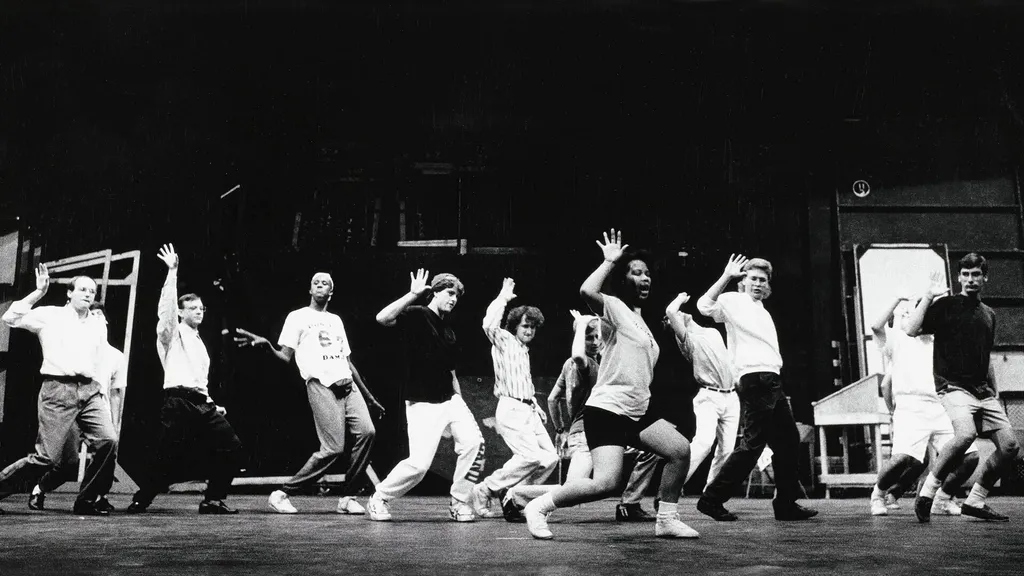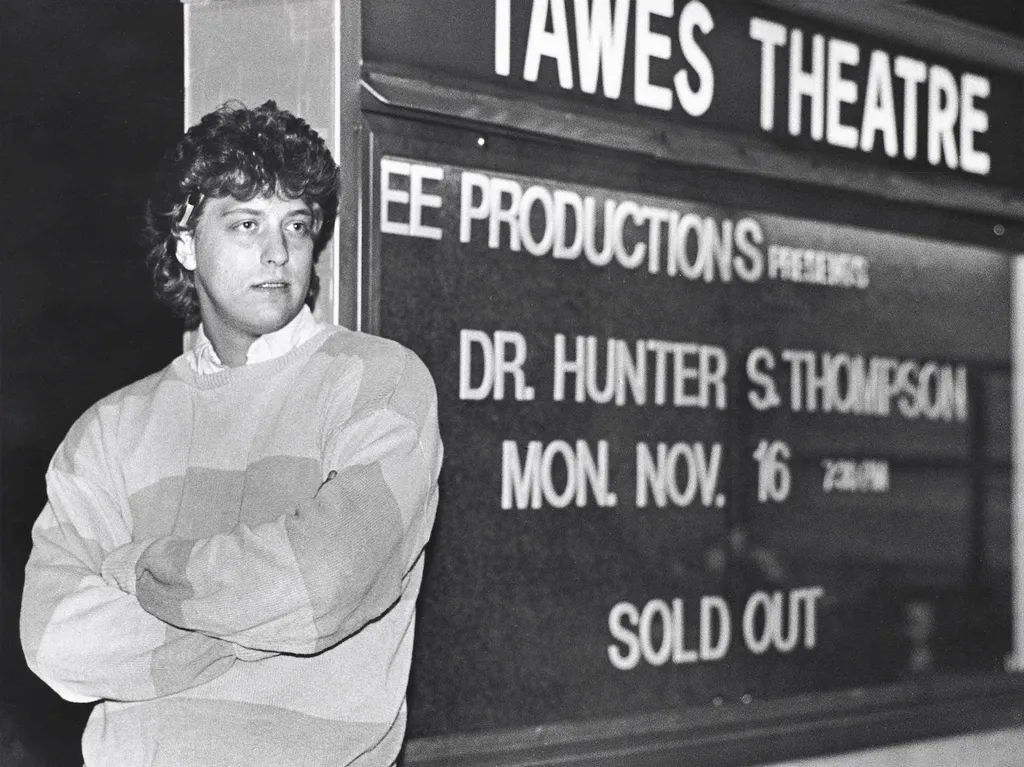- January 31, 2024
- By Sala Levin ’10
This is the first in a new series called “Whatever Happened to …,” which will scope out the histories and fates of aspects of the UMD campus and experience that no longer exist. Have an idea for a subject? Email writer Sala Levin at snlevin@umd.edu.
Today, Tawes Hall is the bustling hub of the English and American Studies departments, but before that, it was an empty hull, the ghost mall of the University of Maryland. Before that, it was the Tawes Fine Arts Building, also known as Tawes Theatre, home to the performing arts departments and a stage that hosted plays, concerts, speaking engagements and even a presidential debate.
Whatever happened to Tawes Theatre? Here, Maryland Today goes behind the scenes for a look at the history—and eventual destiny—of a campus institution.
Act I
The Tawes Fine Arts Building, opened in 1965, was named after J. Millard Tawes, governor of Maryland at the time. It was home to the theatre and music departments, and its theater could seat 1,350 people. “That was the main performing arts building on campus” before the Clarice Smith Performing Arts Center opened in 2001, said Lori Owen, assistant dean for facilities and space planning for the College of Arts and Humanities, who has been with ARHU for 30 years.

Bill Brandwein ’74, operations and facilities manager at The Clarice, spent a lot of time in Tawes as a theatre student. “We did a wonderful production of ‘Jesus Christ Superstar’ with a Black Jesus and a white Judas,” said Brandwein. “As the show began … a trap door opened in the middle of the stage and you’d see this giant Afro backlit as he walks out of the tomb. It was very popular.”
The building had a reputation for being somewhat ramshackle. “It was called the Tawes Fine Arts Closet for a while,” said Brandwein. A warren of zigzagging hallways and dressing rooms doubled as faculty offices, and much of it was uninsulated. The heating and air conditioning systems were notoriously problematic. “The HVAC was so noisy that for most performances, they had to turn the system off in order to have decent acoustics,” said Owen. “That didn’t work so well.”
The Canine Phantom of the Opera
Like Marie Mount Hall, the Rossborough Inn, Morrill Hall and a few other historic spots on campus, Tawes was considered by some to be haunted. But this ghost wasn’t a disgruntled professor or a student who died tragically—it was a dog named Mortimer. “I heard the ghost many times, and I’m aware of the evidence,” said Brandwein.
Mortimer allegedly belonged to a student named Tom, the first technical manager of the building. During its construction, the story went, Tom would stand on the stage and toss a Frisbee out into the house, where no seats had yet been installed. “The dog would leap up and grab the Frisbee and do a back flip and land,” said Brandwein. After the seats were put in, Tom accidentally tossed the Frisbee too far into the house, past the aisle separating the seats from the stage. “The dog leaped up, did a back flip, landed upside down on a seat, broke his back and died instantly,” said Brandwein.
Tom and a few of his friends turned a plot of dirt in the basement into the perfect final resting spot for a theatrical dog like Mortimer. “I believe the dog’s spirit was trapped there,” said Brandwein. “You’d hear clicking, like a dog’s toenails, on the stage. Things would be moved—no damage, just things that a good-natured dog would do. We’d just say, ‘Goodnight, Mortimer.’”

Famous Faces
Tawes Theatre in its heyday hosted performers of all kinds. In 1974, the world’s most famous mime, Marcel Marceau, delivered his silent, face-painted routine at Tawes. On April 28, 1977, Steve Martin took his banjo and comedy act to Tawes. Two nights later, Billy Joel came through for a stop on his Turnstiles tour, serenading the crowd with “Piano Man” and “Captain Jack.” In October of that year, Patti LaBelle took the stage. And in 1983, pioneering feminist Gloria Steinem spoke. Even presidential candidates headlined Tawes: In 1992, four Democratic presidential contenders, including Bill Clinton, debated onstage.
Building a New Set
In 2000, the Department of Theatre (later merged with the Department of Dance into the School of Theatre, Dance, and Performance Studies) and the School of Music relocated to the Clarice Smith Performing Arts Center. For years, Tawes remained unoccupied and unused, but in 2007, the university began renovating Tawes to make it the home of the English department, which for years had been in temporary space in Susquehanna Hall. The English department moved into Tawes in 2009.
Five years later, the university launched a second renovation, which converted the theater into two lecture halls and four classrooms, and a four-story vertical area long known as fly space (a backstage area for set pieces, as well as lighting and rigging equipment) was turned into an extended window well, providing natural light to offices that lack external windows. The Department of American Studies settled into Tawes in 2016.
“Tawes is a heck of a place,” said Brandwein. “So much stuff happened there over the years—some really famous stuff, and stuff people have forgotten about or didn’t know about.”
